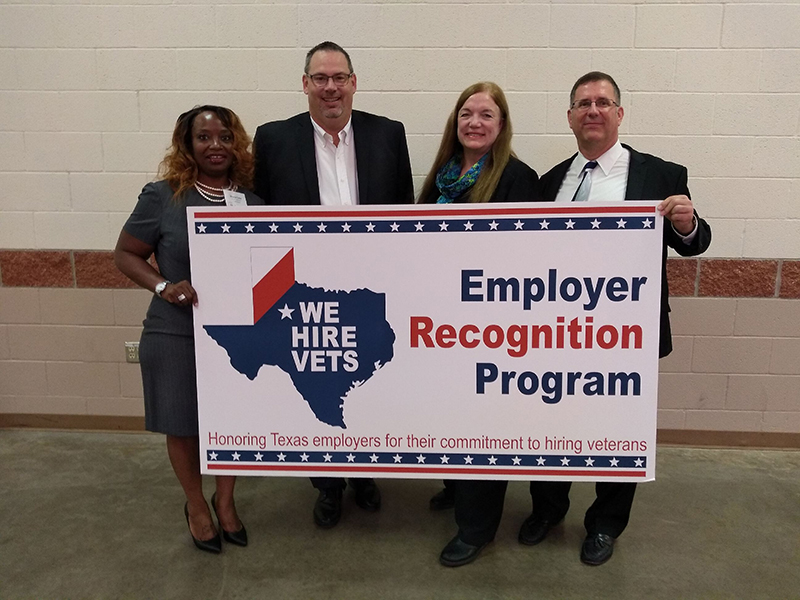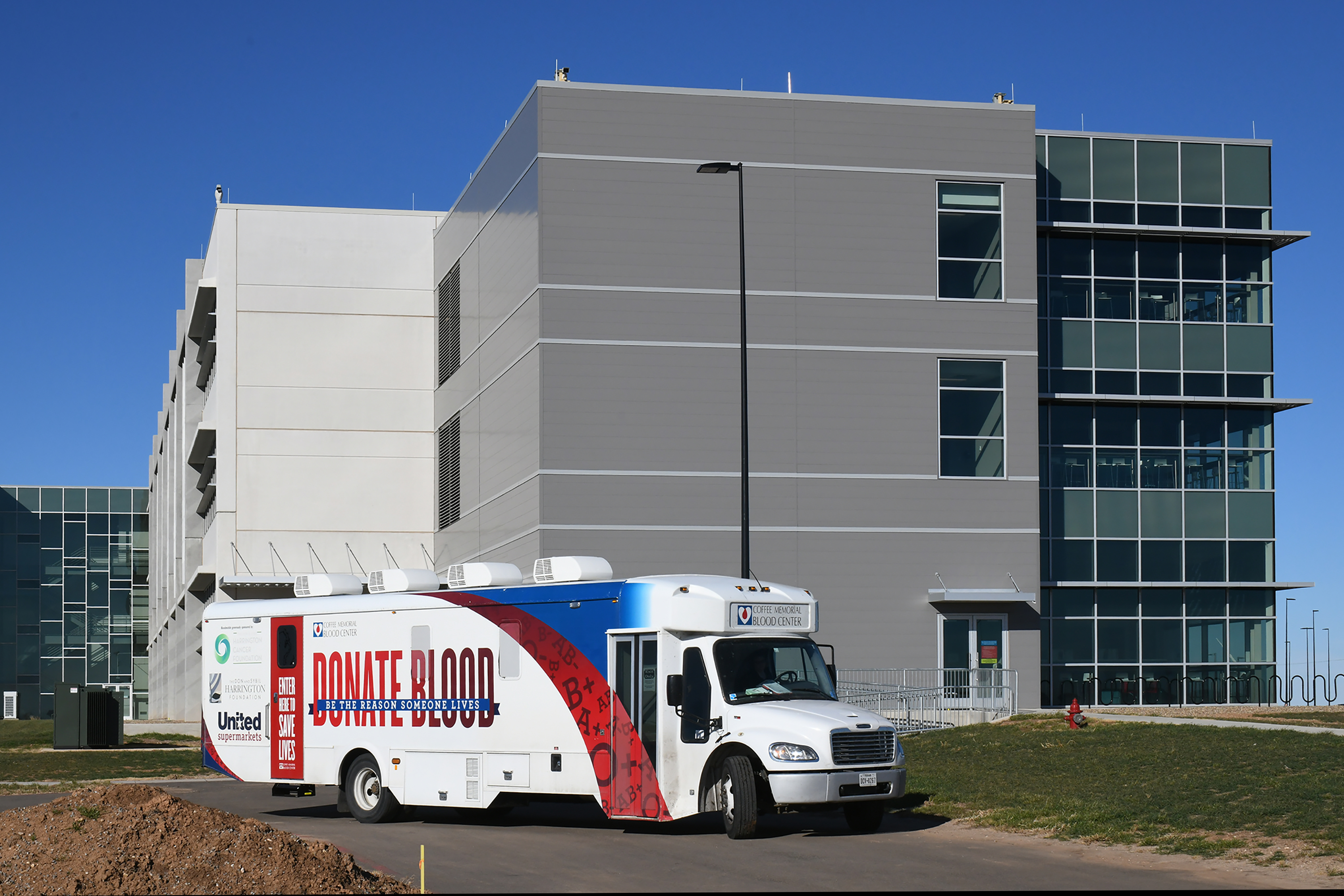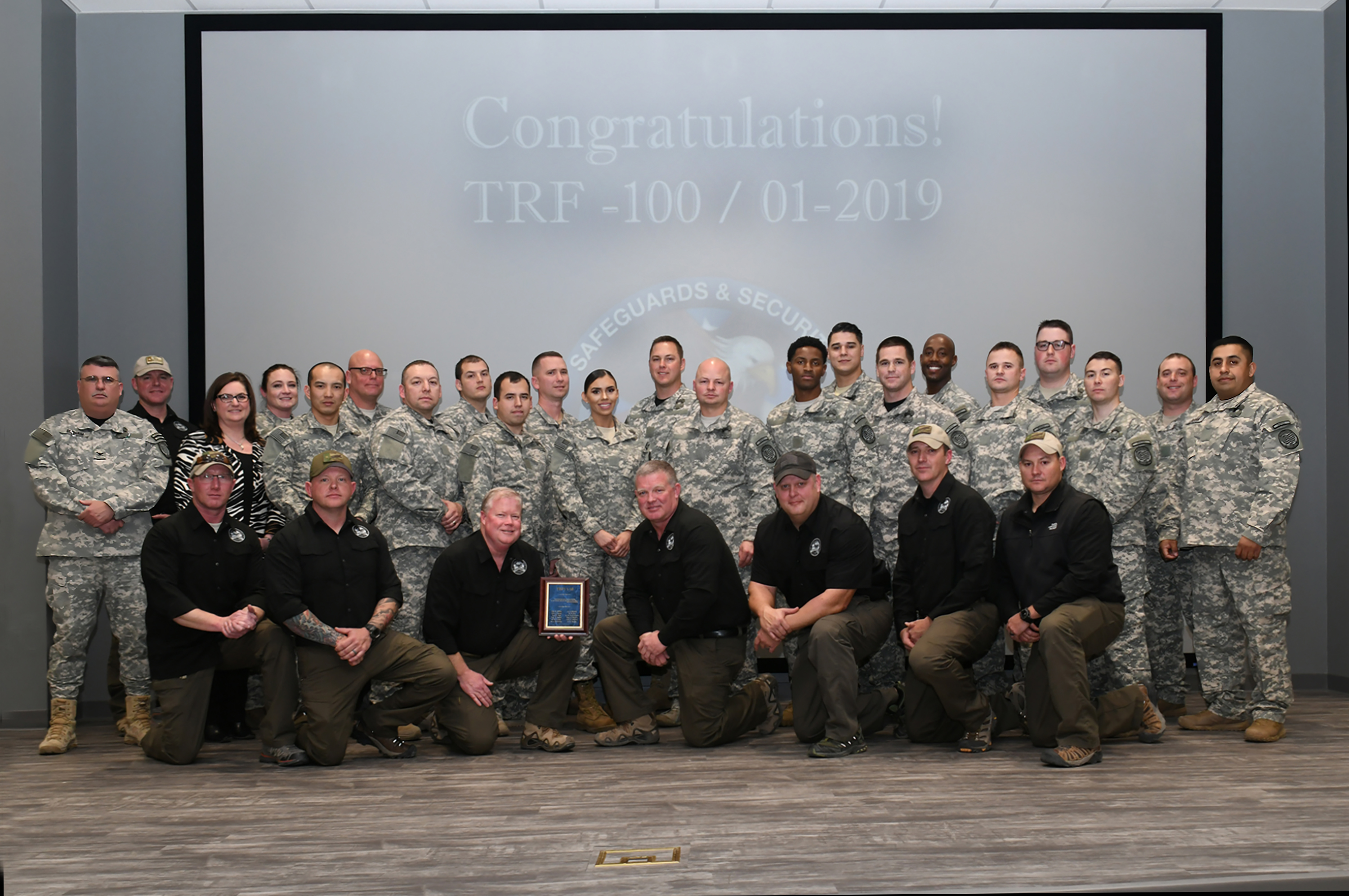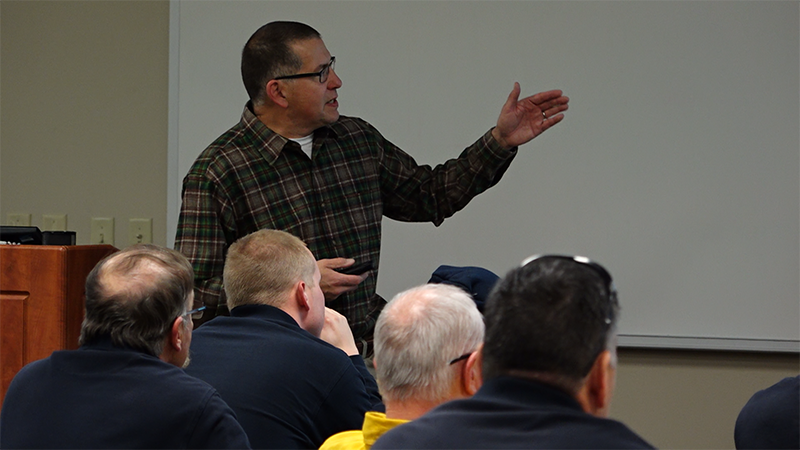Pantex Blog
Pantex and Y-12 named veteran-friendly employers

Pantex and the Y-12 National Security Complex were recently named veteran-friendly employers. The Texas Workforce Commission and Texas Veterans Commission honored Pantex with the distinction in 2018, and the Tennessee Veterans Business Association recognized Y-12 in January. Together, Pantex and Y-12 employ more than 1,800 veterans.
Veterans serve in a range of roles at the sites, everything from security police officers to machinists to weapons assembly/disassembly operators to engineers. “Working at Y-12 has allowed me to continue my service to the nation in a meaningful way,” said Tom Tress, who served as a helicopter mechanic in the Marine Corps and is now a Lean Six Sigma Black Belt working on process improvement initiatives at the site. “I believe strongly in our nuclear deterrence mission.”
Sherry Philyaw, retired senior chief petty officer who now manages infrastructure assessments and corrective actions at Pantex, finds continuity in her military and Pantex careers through the structure and formality of processes. “To assure the dependability of every single one of our products, we have to follow procedures and policies, just like in the Navy,” she said. “We check and double check everything. Our customer has to know without a doubt that the product we deliver will be exactly what they are expecting.”
In addition to veterans, Pantex and Y-12 employ active-duty Reserve and National Guardsmen and women who are often deployed on tours of duty around the world.
“Military service builds skills that are very valuable to employers,” said Heather Freeman, Pantex Human Resources site manager. “Veterans have training in leadership, teamwork, loyalty, decision making, and technical skills. They have real-life experience, work well under pressure, are responsible, have a strong work ethic, and can interact with a variety of people. It is a great investment for both employers and those who have served our country.”
Moreover, since July 2014, Consolidated Nuclear Security, the managing contractor of Pantex and Y-12, has awarded veteran-owned small businesses nearly $184 million in contracts and service-disabled, veteran-owned small businesses more than $81 million. Those contracts represent more than 200 veteran-owned small businesses and about 100 service-disabled, veteran-owned small businesses.
January is National Blood Donor Month
January is National Blood Donor Month. In 2018, Pantexans donated more than 475 units of blood to the @Coffee Memorial Blood Center. Pantex has hosted the bloodmobile approximately every two weeks since the 1960s.

Protective Force graduates
Congratulations to the newest Pantex security police officers! The 19 graduates completed more than 300 hours of training as part of the Department of Energy National Training Center’s Tactical Response Force I course.

Pantex holds hazardous materials briefings for local first responders
On December 13th and 17th, the Pantex Emergency Management Department held briefings for local emergency services about how to keep themselves safe during possible hazardous material emergencies at Pantex that could affect surrounding jurisdictions. Local first responders such as fire department, law enforcement, and public health teams as well as Pantex’s own off-site liaison teams attended the briefings to learn what they could expect and how to prepare in the event of an emergency that requires response or mutual aid from the local stations.
Chuck Rives, Pantex senior emergency hazards analyst and presenter at the event said, “We provided this presentation to help them be ready to respond to emergency that could come from Pantex, so that we can help them know what the dangers are, what kinds of materials that could be coming from the plant, and what they need to do about them.”
In the past, these sorts of briefings were given to high-level individuals. This is the first year that the briefing was given to all first responders from chief to officer.
“We want them to feel like they get the honest truth from us, so they know what the real hazards are,” Rives said. “Now they have solid information and can be confident in what they’re doing.”
In addition to the mutual aid given by Pantex emergency personnel in the local communities, these presentations promote further open dialogue and cooperation with local authorities.

Pantexans support Salvation Army
Amanda Hammer and Kenny Steward were among the Pantex volunteers who staffed the Salvation Army's Red Kettle throughout the day December 13 at United on Soncy. Their efforts were accompanied by a $5,000 Pantex donation. The Salvation Army's Red Kettles enable the organization to help those in need during the Thanksgiving and Christmas time periods.

